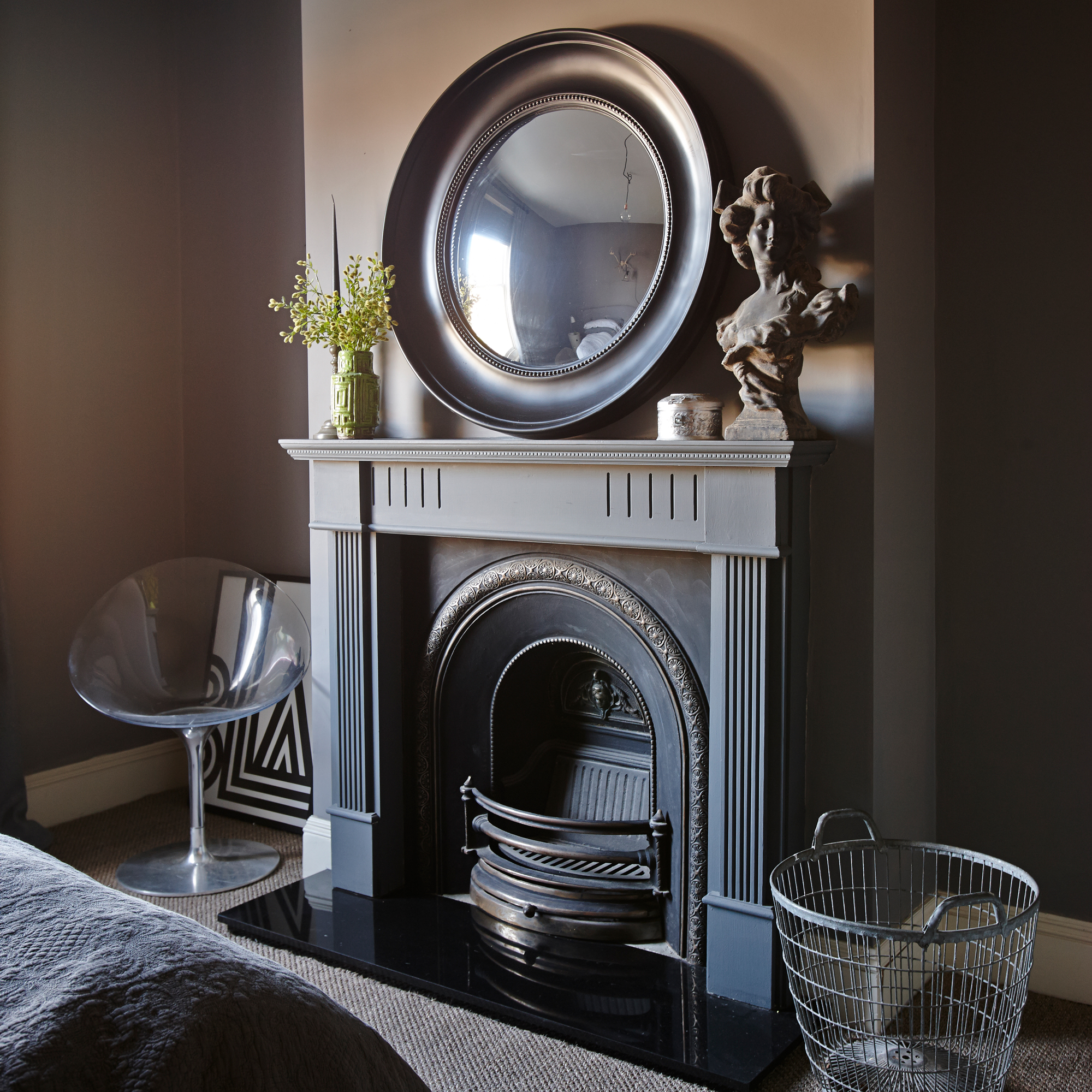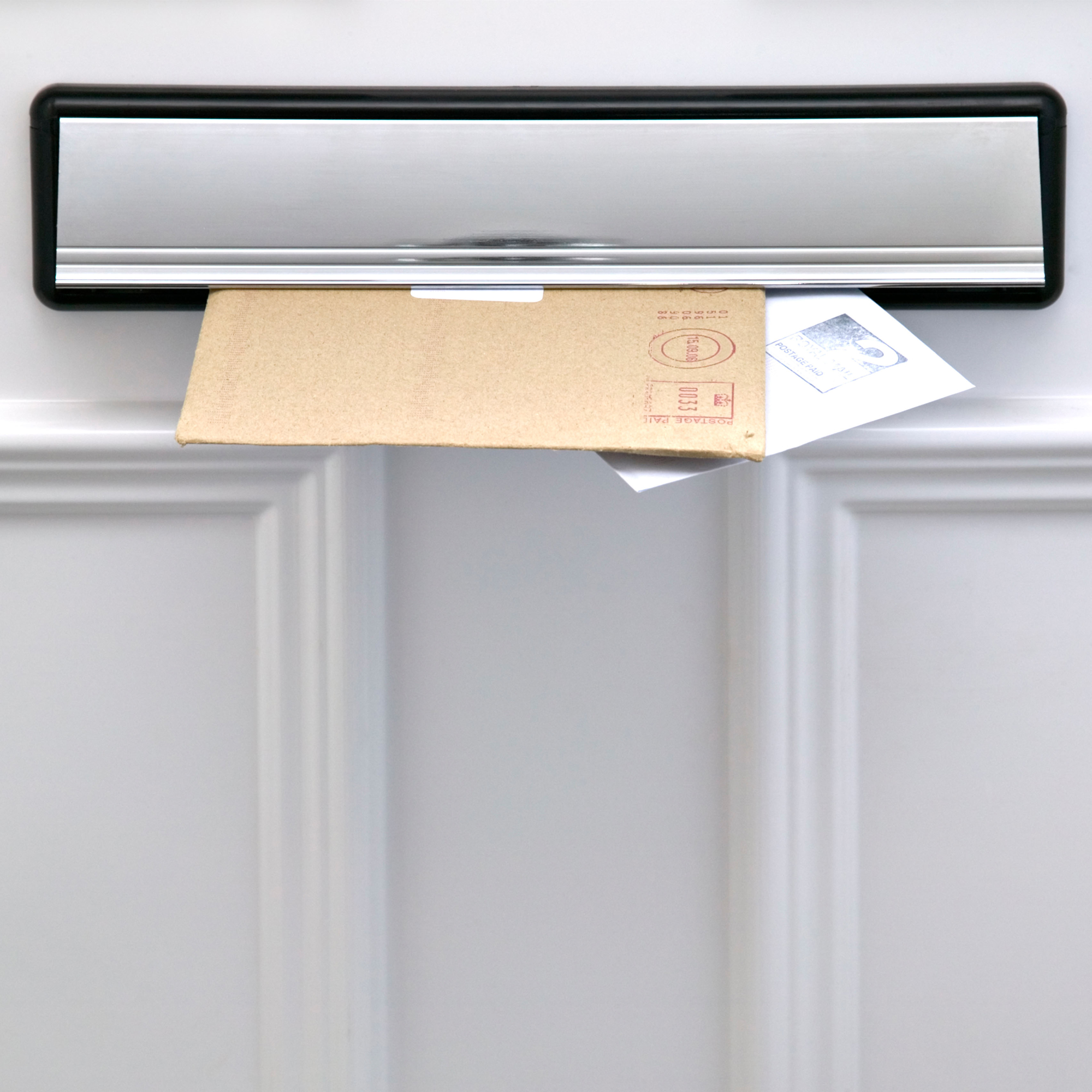8 DIY draught-proofing ideas to help keep your home warm on a budget
Get rid of unwelcome cold breezes with these eight simple methods for draught proofing


Draught proofing needs to be a household job we all do. Cold draughts in your home are a sign that things aren’t working as efficiently as they could be. Recent research from Mortgage Advice Bureau found that one in eight Brits want to draught-proof their property. How to stop draughts from doors is a common problem. And solving it is one of the ways you can make an old house feel warmer in winter.
‘Most houses, particularly old ones, have cracks and gaps where warm air goes out and cold air blows in,’ says Natasha Collins-Daniel, campaigner at the Centre for Sustainable Energy. ‘Draught proofing is easy and any competent DIYer can fix gaps in floorboards; around windows and doors; through the letterbox; where pipework comes through external walls; around the loft hatch; and around electrical fittings.’
There might be a clear source of a draught, but if there’s no obvious culprit, you can have an air pressurisation test done. ‘Someone comes along to give an air leakage value for the house and tells you what proportion of heat is being lost through any particular area,’ says Douglas Kent, Technical and Research Director of the Society for the Protection of Ancient Buildings (SPAB). ‘I had this done a few years ago and it cost £200.’
Once you’ve found the origin, it’s time to fix the issue.
DIY draught proofing ideas for your house
Here are our tips for solving eight common causes of draughts. They are sure to keep your house warm in winter.
1. Hang thermal curtains & blinds

Even if you’ve got double glazing, cold will pass through glass much easier than through a solid wall, while draughts may get in around frames and seals. Using your curtains and blinds as a thermal barrier as a draught proofing idea will help to keep rooms feeling cosy – and the same goes for glazed doors. Thermal products contain layers that work to reduce heat loss and draughts, and prices from High Street brands such as Dunelm start from as little as £15.
‘Pair thermal or blackout linings with naturally thicker fabrics such as velvet to improve the thermal qualities of your curtains even further,’ says Yvonne Keal, Senior Product Manager at Hillarys. ‘Shutters are also an excellent way to improve energy efficiency. Fitting snugly into your window recess, when closed, they can reduce heat loss by up to 62% through single glazing.’
Sign up to our newsletter for style inspiration, real homes, project and garden advice and shopping know-how
Going a step further, you could try an insulated door curtain to block draughts.
2. Seal up chimneys

A chimney is a big hole in your building’s structure that will be letting warmth out and pulling cold air in. Draught proofing is the answer.
Thankfully, there are various chimney draught excluders available to fit yourself to help stop draughts from chimneys. Make sure you get the right size and that the product has a small vent for air to pass through (otherwise you’ll risk damp problems). And always remember to remove the draught excluder before lighting a fire.
‘If it’s a redundant chimney, you might as well have it sealed,’ suggests Sally Phillips inventor and director of Chimney Sheep. ‘But if it’s one you occasionally use – perhaps in a power cut or at Christmas – then a removable draught excluder might be better.’
Balloon draught excluders start from £16 and expect to pay more for umbrellas – solutions from Chimella start at £74.99, for instance.
3. Use fabric draught excluders

The gap at the bottom of doors is an area of concern when it comes to cold air drifting between rooms. Old-fashioned cushioned draught-proofing excluders are still a fantastic solution for this, plus they’re readily available in a range of fabrics and styles.
Prices vary hugely depending on where you shop. You can pick one up from a budget retailer for under £10, but expect to spend more (up to £75+) in upmarket home brands. If you’re feeling creative, it’s easy to make your own from scratch using old clothes. For instance, the National Trust suggests laddered tights work brilliantly as stuffing .
4. Cover keyholes and letterboxes

The front door is a major culprit for draughts because there are several areas where cold air can sneak inside. Keyholes might look small, but you’ll be surprised by how big a difference draught proofing these will make. And even if the letterbox has a flap or brushes, is it working as efficiently as possible?
Screwing metal covers to the outside of your keyhole and letterbox is a quick and cheap solution that you can easily do yourself. Escutcheon keyhole covers for mortise locks only cost a couple of pounds. For modern cylinder locks, keyhole lock cover guards work in a similar way.
Letterbox flaps come in different finishes, and you’ll pay accordingly (between £9-£30 at DIY stores). Brush draught excluders are easy to add to if you don’t already have one. Remember to take measurements before buying.
Choosing a new front door is another avenue to consider.
5. Add draught-proofing strips to windows and doors
Doors and windows are designed to be openable, but if they’re letting draughts into your home when shut there’s something wrong. ‘There are lots of small things you can do to temporarily draught proof the gaps and create a short-term solution,’ says Jill McLintock, Head of Product Marketing at Everest.
Draught-proofing strips for casement windows stick around the frame and seal gaps and are an easy way how to draught-proof windows. Most products are self-adhesive and cost a couple of pounds online and from DIY stores.
For sash windows and doors, your best bet is a solid strip with brushes or wipers. These are a bit more expensive than self-adhesive strips, but many products cost under £10.
Alternatively, you could consider replacement windows.
6. Fill gaps in floorboards and skirting boards
Cracks between floorboards can feel breezy, but it’s easy to DIY fill them. Make sure the product you use is flexible enough to move when the wood expands and contracts, and ideally choose something that matches the colour of your flooring.
‘Floorboards can be sealed using Stopgap,’ says Peter Draper, Project Associate at STBA. ‘You can also use a mix of wood dust and filler, add carpet or insulate the floor properly (with attention required around the perimeter). But be careful not to block ventilation under the floor.’
A 40m pack of StopGap costs £24.99 on Amazon. Flooring filler or decorators’ caulk are good options if you know what you’re doing; a tube of ready mixed wood filler costs around £7-£8 at DIY stores.
Adding insulation under the floorboards is a better long-term solution for draught proofing – but that’s a bigger job that will probably need a professional involved. Fitting a new surface over your floorboards will help to keep things cosy, which leads onto our next point…
7. Use carpet underlay
Carpets are soft underfoot and help you feel warmer than hard surfaces such as stone and wood often do. A carpet underlay will add another layer of insulation to your flooring, helping to cut your energy bills. The same goes for vinyl, wood flooring and rugs.
Underlay could help improve the lifespan of your carpet by up to 50%, too, according to Carpetright. Make sure you get the right product for your flooring. And be aware that underfloor heating may not work efficiently if you install an underlay.
Most underlays for carpet are rubber-based. Products for hard flooring need a moisture barrier. Prices at Carpetright range from £3.49 per m2 for a 3mm wood and laminate underlay up to £16.99 per m2 for a thick 11mm carpet underlay.
8. Draught proof loft hatches
Uninsulated homes lose a quarter of their heat through the roof, according to the Energy Saving Trust. Knowing how to insulate your home is the first step to stopping this and especially insulating your roof and loft.
A quick and affordable DIY fix is to make sure the entrance to your loft isn’t a weak spot for letting cold inside and insulating a loft hatch. The way your loft hatch opens will dictate what kind of draught-proofing method is best.
For loft hatches that sit on the frame of the entrance, add a compression seal or foam strip around the edge of the hatch to get rid of any gaps when closed. If your hatch swings down when opened, put the seal or strip on the outside perimeter of the door and one on the entrance frame. Take this one step further by insulating the top of the hatch, too.

Emily Batesmith is a journalist and senior magazine editor specialising in homes, renovation and self-build. She’s spent more than a decade creating content for the UK’s leading homes titles on a huge variety of topics that help people to realise their dream property. Her writing ranges from practical advice on installing money-saving renewable tech and inspiring interior ideas for the perfect living space, through to in-depth guidance on building systems and products, and easy-to-navigate DIY guides.